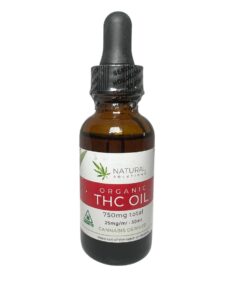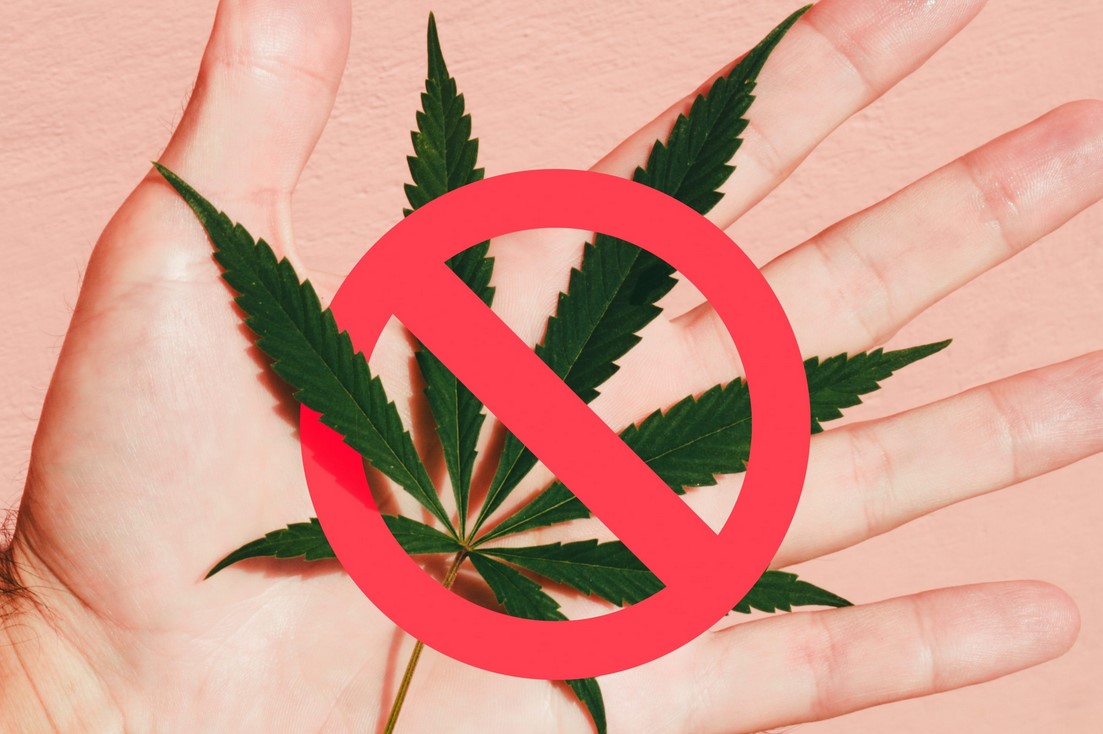-
×
 Omega THC Oil - 1000mg
1 × $40.00
Omega THC Oil - 1000mg
1 × $40.00 -
×
 Giid Cannabis Infused Face Serum
1 × $80.00
Giid Cannabis Infused Face Serum
1 × $80.00 -
×
 Organic THC Oil 750mg
1 × $40.00
Organic THC Oil 750mg
1 × $40.00
Uncategorized
Cannabis Prohibition in Canada
Canada’s original drug laws were based on discrimination and unfairly targeted Indigenous, Black, Asian Latinx, and other vulnerable communities.
Canada’s initial experiment with prohibition was largely motivated by the anti-Chinese racism that had become prevalent in British Columbia during the construction of the Canadian Pacific Railway. When an influx of Chinese immigrants settled in Vancouver and its surrounding areas, this only served to exacerbate existing tensions.
The Opium and Drug Act of 1908 illegalized the sale, manufacture, and import of opiates and cocaine for non-medical use in Canada. The law’s main target were Chinese Canadians, who experienced the majority of arrests and legal penalties. As news about illegal drug use spread across the country, eastward from its origin point, media outlets began to produce more alarmist content about drugs users–laying the foundations for societies’ negative views on them.
Emily Murphy’s book, The Black Candle, expressed the Canadian public’s belief about race and drug use during that time period. It also firmly stated addiction as a legal matter instead of a health concern. By publishing this book in 1922, Murphy wanted to motivate the public to ask for stronger drug laws. Fortunately, her wishes came true soon after its release.
The1908 Act was the launchpad for later legislation preventing other drugs. For example, cannabis was made a scheduled substance in 1923 when all drug-related legislation came together under one act: The Act to Prohibit the Improper Use of Opium and other Drugs. However, there is no record that The1908 Act was ever discussed or debated by Parliament at the time.
The 1929 Opium and Narcotic Act set up harsh punishments for those caught consuming, selling, or possessing drugs. For the next 40 years, this would be the base of Canada’s drug policy. In 1961, as psychedelic use increased among youth culture entering the 60s decade, the Narcotic Control Act was put into place. This made possession of cannabis (as well as other drugs) a punishable offence with jail time ranging from 7 to 14 years instead of only seven.
In addition to Single Convention on Narcotic Drugs, the ACT also enforced elements of an international treaty that Canada was a part of. The later legislation Controlled different activities related to MDMA, LSD and other psychotropic substances. There were many Canadians with clean records who got arrested during this time, so the government decided to launch Le Dain Commission in order to investigate drug use further. The commission recommended less severe penalties for drugs however prohibition remained unchanged
In 1996, the Narcotic Control Act was repealed and replaced by the Controlled Drug and Substances Act, which decreased possession of cannabis penalties. The law is still in place today but has been amended multiple times.
Indigenous cannabis remains in federal vs provincial law limbo
The Cannabis Act was supposed to legalize weed for everyone in Canada, but it completely ignored sovereignty rights of Indigenous people. Groups were angry that there was no consultation during the development stage, and saw that the legislation did nothing to protect Indigenous sovereign, inherent, or treaty rights as they relate to cannabis.
The National Indigenous Medical Cannabis Association (NIMCA) released a statement that strongly opposed Bill C-45. They argued that the government failed to take into account how this legislation would impact First Nation and Indigenous communities. The statement reads, “It’s clear that Canada does not care about First Nation and Indigenous people or our sovereign and Inherent rights. The current Liberal government promised to have a nation-to-nation relationship with mutual respect, but clearly they were lying.”
“Since the promises have not been kept and there has hardly any consultation with Indigenous peoples about significant issues such as cannabis and Bill C-45, it is evident that the Canadian government does not respect our sovereign rights or view us as ideal partners in this confederation.” For example, multiple provinces have conducted raids on unlicensed dispensaries located on Indigenous treaty and unceded lands since legalization.
Terry Parker and the first medical cannabis exception
In 2000, R. v. Parker was a huge case that changed how Canada saw cannabis prohibition – many people believe it was the first step towards legalization on a federal level. It all started when medical cannabis consumer Terry Parker was arrested in 1996 for growing his own plants; he used cannabis to effectively treat his epilepsy seizures. When police raided and found his home-grown stash, he was charged with breaking the Narcotics Control Act (which has since been disbanded).
After Parker’s second police raid, which led to more plants being found in his home, he refused to stop growing and sharing cannabis with other patients. In court, Parker argued that consuming cannabis was vital for him to be able to control and treat his illness. The charges against him were eventually dropped, and he was given an exemption from the law.
The Crown appealed Parker’s decision, but the Ontario Court of Appeal sided with Parker. In the landmarked ruling, it was stated that “liberty includes the right to make decisions of fundamental personal importance.” This in turn refers to choices such as what medication an individual takes to alleviate life-threatening symptoms associated with their illness.
Deprivation of access to medication required for the treatment of a life-threatening medical condition also violates an individual’s right to security of the person. This case spurred the federal government to create the Marihuana Medical Access Regulations in 2001, which granted legal exemption to consume and possess cannabis for patients who met specific conditions. It would take another seventeen years for legislation permitting recreational use of cannabis by adults to come into force.

Much like the United States, cannabis prohibition in Canada has racist roots
Canada’s history of prohibiting drugs is firmly rooted in racist ideology, and today’s justice system still disproportionately affects people of colour. Arrests for cannabis-related convictions have had a disproportionate impact on Black, Indigenous, Asian, and Latinx folks in Canada, although there are few resources that collect race-based crime data.
The Ontario Human Rights Commission’s 2020 study discovered that in pre-legalization Toronto, Black people TEMP represented 34.4% of those involved in single-charge cannabis possession cases, despite only 8.8% of the population being black. This means that not only were black people more likely to be involved in a cannabis possession case, but other racial minorities were as well.
A recent study published in the International Journal of Drug Policy compared cannabis possession arrest rates among Black, Indigenous, and white people living in five major Canadian cities. The findings revealed that with one exception, both Black and Indigenous people were arrested for cannabis possession at higher rates than their white counterparts.
This trend is evident not just in the University of Toronto, but also across the Canadian justice system. The authors discovered that approximately twice as many Black youth are stopped by police compared to their white counterparts, and Black people were 50% more likely to be taken to a police station for processing post-arrest–even after taking into account criminal history and age. In federal prisons, while Black people are already over-represented , they make up “more than 300% vs their population.” This number is especially worrying when contrasted with how Indigenous peoples fare in these situations: they’re over-represented by nearly 500%.
Although these data are relatively new, the trends they display are not. For example, similar patterns in the treatment of BIPOC within the Canadian justice system were revealed decades ago in documents like the 1995 Report of the Commission on Systemic Racism in the Ontario Criminal Justice System and 1991’s Report on Aboriginal Justice Inquiry of Manitoba.
Weed won but the work isn’t done: Mitigating the damage of prohibition
Although cannabis prohibition is over in Canada, this does not mean that pot persecution has ended for all Canadians. Prior to October 2018, an approximation of 500,000 people in Canada were convicted because they had simple possession of cannabis on them. The Department of Justice states that in 2017- the year before recreational marijuana became legalized- over half of Controlled Drugs and Substances Act offences were associated with cannabis offence charges being laid out. Out of those charged, 74%were only possession crimes.
The Canadian government’s Cannabis Record Suspension program was recently photos/mocked for being too difficult to qualify for. The initiative requires applicants to have only been charged with simple possession, and criticism says the application process is long and complicated.
The government predicted that 10,000 Canadians would qualify for a record suspension. However, as of October 2021, the Parole Board of Canada has only received 484 applications since the program started in 2019.
Advocacy groups such as NORML Canada, Medical Cannabis of Canada, and Cannabis Amnesty are working to lessen the destruction caused by criminal convictions for non-violent cannabis offences which number in the thousands across the country.
There are also a number of legislative changes that advocacy groups are pushing for, such as the removal of the cannabis excise tax for medical consumers, the legalization of consumption lounges, and the right to grow cannabis at home in every province.
Did the Cannabis Act legalize weed for everyone?
Even though cannabis is now legal in Canada, many people still can’t consume it how they want. In most provinces, landlords are allowed to ban or restrict smoking and vaping, so only people who own their homes (usually wealthier consumers) have the right to consume cannabis at home.
Most areas in Canada have smoking and vaping bans in common landmarks which frequently include sidewalks, streets, and parks. Therefore, people who are homeless, renters, or frequent medical patients (especially those with limited mobility) face risks if they consume the drug. Even buying cannabis from a legal retailer can be burdensome. While alcohol stores allow parents to bring their minor children inside while they shop, cannabis dispensaries do not permit anyone under the legal age to enter, which makes it difficult for single parents who want to buy weed products from the legal market.
Growing cannabis at home can reduce the cost and make it more affordable, but as of now, residents of Quebec and Manitoba are not legally allowed to grow four plants at home like other provinces. The battle over whether people should be able to grow cannabis in their homes was heard by the Supreme Court in September 2022, and we are still awaiting a decision. Even if the justices rule in favour of allowing home cultivation, those who rent their homes may still be restricted from growing their own. This is because provincial legislation allows landlords (and some condo associations) to ban cannabis cultivation in rental units.
Advocacy is just as important now as it was pre-legalization
It will take time and energy to break down systematic barriers. Health Canada wants feedback from the general public on how they can make improvements to the Cannabis Act in areas such as pardons, medical access, consumption lounges and creating a more equal industry opportunity-wise. If you have something to say concerning any of these topics, legalization’s fourth anniversary is the perfect time to make your voice heard.



